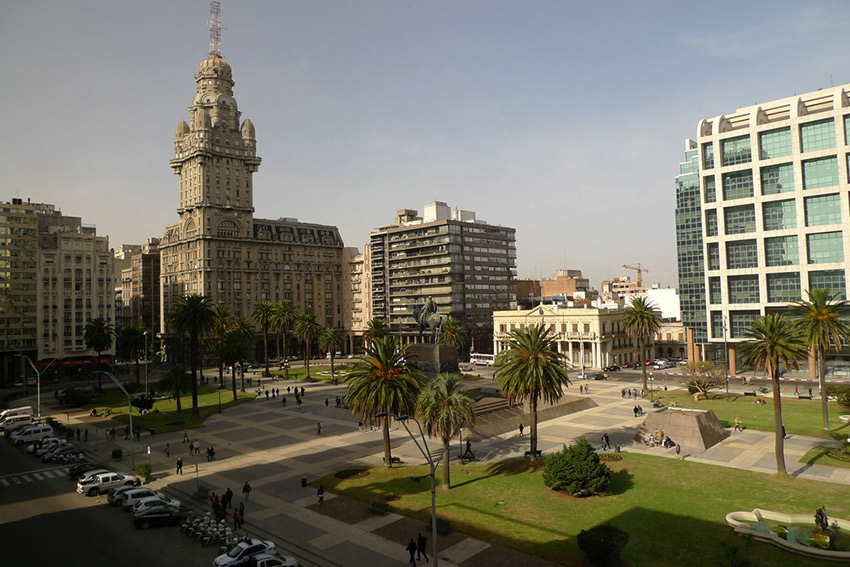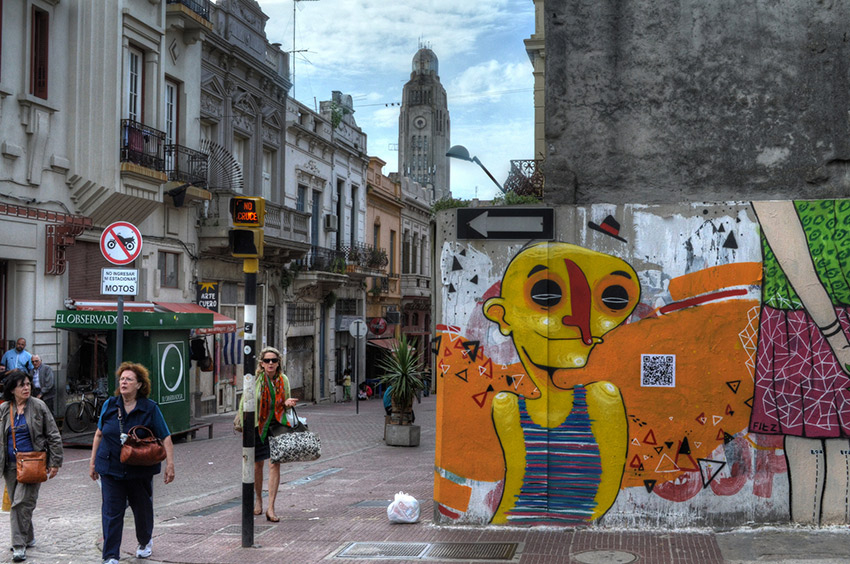Stopovers. Unwelcomed on any travel itinerary. The kind of places where hotel owners wear permanent sneers, where your room’s bright yellow wallpaper suffocates any hint of good taste, where you count the seconds down until your departure and the bathroom door only opens halfway before hitting the corner of the bed.
Nobody likes stopovers. However, for too long one of my favourite countries has been overlooked as a something of a forgotten middle child, placed anonymously between the tourist goliaths of Argentina and Brazil. Somewhere to pass through to get somewhere else. Well, no longer. Although it may be one of South America’s smallest nations, Uruguay is culturally sophisticated, historically rich, progressive and full of unique experiences that used to be available only to the in-the-know travellers. So, stop thinking it’s a stopover, and read on to learn why you need to put Uruguay at the top of your 2016 travel list.
Punta del Este — South America’s answer to Monaco
From super-yacht traffic jams, to the tanned, buffed bodies that look like they were sculptured to elicit maximum envy on the beach, to the high-rise apartment buildings, glamorous hotels and eateries that dot the city, when visiting Punta del Este you could be forgiven for thinking you were walking the foreshore of a billionaire’s playground in Southern France rather than the east coast of South America.

Playa Brava and La Mano. Photo courtesy Sebástian F.
Travellers looking to take in the glamour of Punta del Este, without having to auction off a kidney to fund it, should pull on a pair of comfortable shoes and stroll through Punta del Este’s upscale neighbourhoods to take in the manicured gardens and colourfully decorated homes. Those looking to feel the sand between their toes have to head to Playa Brava, a popular surf beach, which is home to the La Mano, the famous “fingers” sculpture by artist Mario Irarrázabal that rises from the ground like the hand of a buried giant.
No beef, no worries
Finding a meal in Uruguay that isn’t a lightly seared 30-kilo hunk of cow can be a challenge. (The country is one of the largest per capita consumers of beef in the world.) Thankfully, however, Uruguay has a number of renowned culinary haunts and regional dishes that cater to those looking for more than a red meat overdose. Travellers who seek an upscale dining experience should book a table at Tandory restaurant, which is quietly tucked away in suburban Montevideo. Tandory’s Chef Gabriel Coquel fuses local spices and produce to create a modern take on ethnic dishes from the region.

It won't take you long to find these amazing street eats in Montevideo. Photo courtesy John W.
If you do find yourself in Uruguay on the 29th of any given month and want to eat as locals did in times past, you should sit down to a hearty meal of local gnocchi, or "ñoquis" as they are known. As this date falls towards the end of the month, it was traditionally the day before payday, when people were at their poorest. Gnocchi was a filling, but cheap, meal and those with superstitious personalities used to leave a coin or a banknote under the plate to attract prosperity — not a bad idea if you’ve just blown your budget in Punta del Este.

Plaza Independencia in Montevideo. Photo courtesy John W.
Parched travellers looking for a local beverage need to get their hands on a gourd of yerba mate, the hugely popular regional herbal tea. Consumed through a metal straw and shared amongst friends, yerba mate can taste like a bitter mix of vegetables, herbs and grass that may not sound exactly appealing, but has to be tasted to be understood. After all, can you really say you experienced Uruguay if you didn’t try its most popular drink?
A walk through the cobbled roads of Colonia
Rows of sycamore trees rustle dried leaves in the summer wind, as the early morning illuminates the stone houses lining the narrow, cobbled streets of Colonia, a town so stunningly preserved that it has been decreed a UNESCO World Heritage site.

The cobblestones of Colonia.
Founded in 1680 by the Portuguese governor of Rio de Janeiro, Colonia grew in population and importance in the 17th century as a major smuggling hub opposite Buenos Aires across the Río de la Plata. Remnants from the town’s early history can still be seen today through visiting Colonia's historic lighthouse and the ruins of the Convent of San Francisco. Visitors who want to take in one of the world's most memorable sunsets should finish their day mixing with locals strolling along the riverfront promenade as a heavy ball of fire casts long orange-tinged reflections across the still river waters.
Taking art to the streets in Montevideo
This capital city is home to some of the most innovative and daring stencil art and graffiti on the continent. Urban explorers looking to immerse themselves in Montevideo’s burgeoning street art scene need only step outside for access to one of South America’s most dynamic and evolving galleries. Pieces from local artists like Oz Montania, Pablo Herrero and David de la Mano span a wide spectrum of styles and themes; from politically motivated artworks, to inventive large-scale stencils to more traditional murals depicting historical figures from Uruguayan history. Fear not, travellers don’t need to search seedy urban back alleys for obscure lashes of spray paint; some of Montevideo’s best aerosol-based musings can be found coating the skins of buildings of the city’s plazas and suburban streets.

Step outside to see Montevideo’s burgeoning street art scene. Photo courtesy Stephen D.
#ranchlife
A simpler, slower life on the land. It’s what many dream of, but few actually accomplish. Luckily for those who make it to Uruguay, it is all too easy to leave the bright lights of the big city behind and experience rural life at one of the country’s many ranches or “estancias”.
Uruguayan estancias are not grandiose tourist novelties. In general, they are unpretentious places ideal for switching off from modern life — many aren’t even connected to the electricity grid.

Leave the bright lights of the big city behind for an estancia. Photo courtesy UGA College.
Travellers looking to get the most out of their rural experience will be those who pitch in around the ranch, or explore the countryside by foot or horse. Uruguayans have a proud history of being master horse riders, and there is no better place to learn how to ride gaucho style, where the relaxed riding motto seems to be that you don’t gallop unless there is a problem. And there are rarely any problems.
Getting There
G Adventures runs a number of tours that take in the best of Uruguay, encompassing a wide range of departure dates and activities to cater to different tastes. We can’t wait to show you more of this wonderful blue planet of ours — check out our small group trips here.























